The e-commerce landscape has opened unprecedented opportunities for artists, with billions of dollars in online art sales each year. And with the rise of user-friendly marketplaces that boost visibility and offer code- and jargon-free setups, it’s easier than ever for artists at any level of business savvy and budget to start selling art independently and affordably.
Selling art online is similar to other online businesses but has unique challenges. With careful planning, organization and research, you can set up a legitimate art marketplace that doesn’t require previous technological expertise.
These key considerations (infused with insider tips and insights from entrepreneurs who sell art online) will streamline your setup process.
Find your niche
To build a thriving online art marketplace, you’ll need to identify and showcase your unique style and story to catch customers’ attention. Think of what sets your art apart and which cultural landscapes inform it.
There are a few different “themes” to consider when determining your niche:
- Color scheme: Many artists create work in specific palettes, such as monochromatic, warm reds and yellows, or muted neutral tones. Using a specific color set could help make your art feel cohesive.
- Medium: Perhaps you create earthen sculptures or watercolor paintings. Whatever medium you use helps define a niche for your art.
- Subject matter: A specific theme such as sustainability, music or politics can be a consistent thread for an artist’s brand.
- Functionality: Artists who create usable items such as pottery or jewelry may choose a niche based on the functionality of their art.
Finding your niche also means identifying your audience and who is interested in your work.
You can review previous sales and walk through the customer journey. Was there a particular piece of art that performed particularly well in the past? What feedback have you received from showings? Does your audience know how to buy art, or are they new collectors?
Watermedia and mixed media artist Hailey Herrera didn’t reinvent the wheel when choosing a niche but instead looked to what previously worked offline.
“When deciding to sell art online, I chose my niche based on previous success selling prints at a local gift shop. I noticed that my prints, distinguished by their colorful and unique appearance achieved through watercolor batik techniques, were popular among customers.”
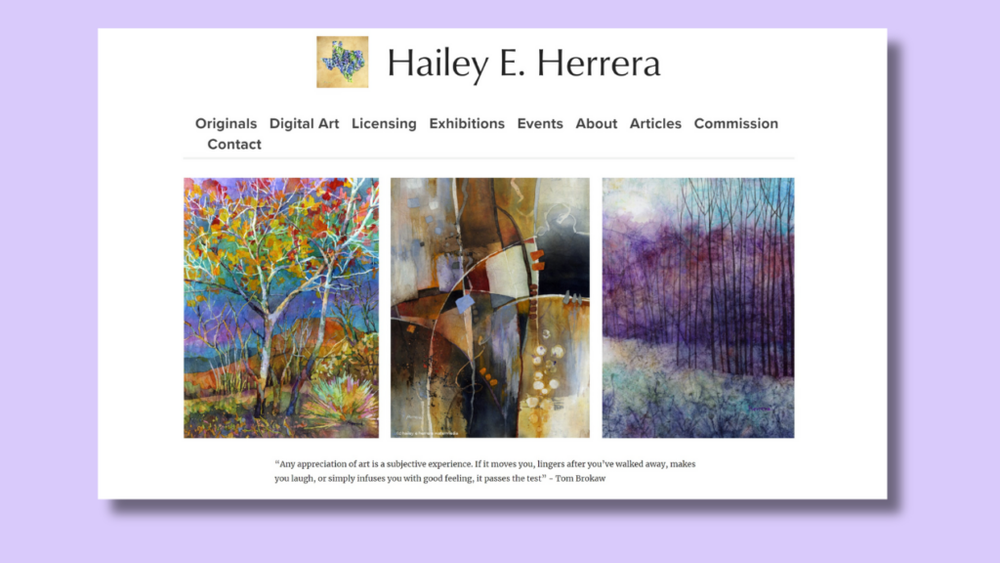
Write details about your niche in a dedicated document or alongside your business plan or branding notes to keep them handy for future marketing uses.
Document your artwork thoroughly
Now it’s time to document your work. You can do this in a simple spreadsheet or with a program like Artwork Archive, which offers features such as income tracking, file storage, payment processing and WordPress integration.
First, decide what you want to document. Here are a few common details you can track:
- Name of artwork
- Date of completion
- Medium
- Measured dimensions
- Number of editions
- Publications and mentions
- Showings and event participation
- Sale status or payment details for original works
- Current condition of the artwork
Next, you’ll need to take high-quality photographs of your art. When shooting your work, showcase the art above all else. Ensure the art fills most of the frame and minimizes distracting elements.
Related: The best point-and-shoot cameras in 2024, tried and tested
Keep these additional tips in mind:
- Consider the lighting: Shooting outside on a cloudy day is ideal due to the diffused, even glow. If shooting indoors, avoid harsh lights and use a portable light source (like an affordable ring light) for flexibility.
- Keep the background uncluttered and neutral: Opt for simple backgrounds with plain, light or neutral tones such as white, beige and gray. These tones recede into the background while pushing the vividness and detail of your art forward.
- Remove framing: If you’re photographing 2D artwork, remove the frame to avoid reflections or distortions caused by light.
- Align your shot mindfully: When it comes to flat art, make sure that your art is parallel to the camera lens to avoid distortion. Take extra pictures with slight variations to get the shot right, and use a tripod for stability.
- Always back up your images: Too often, an artist sells a piece, loses their documentation and therefore has no archive of their work. Make sure to back up your images in the cloud or on an external device.
Artist and abstract painter Natalie Brake carefully aligns her art to avoid distortion, photographing with diffused light to avoid glare. She takes up most of the frame with the art itself, giving viewers a clear idea of what the piece will look like in their homes.
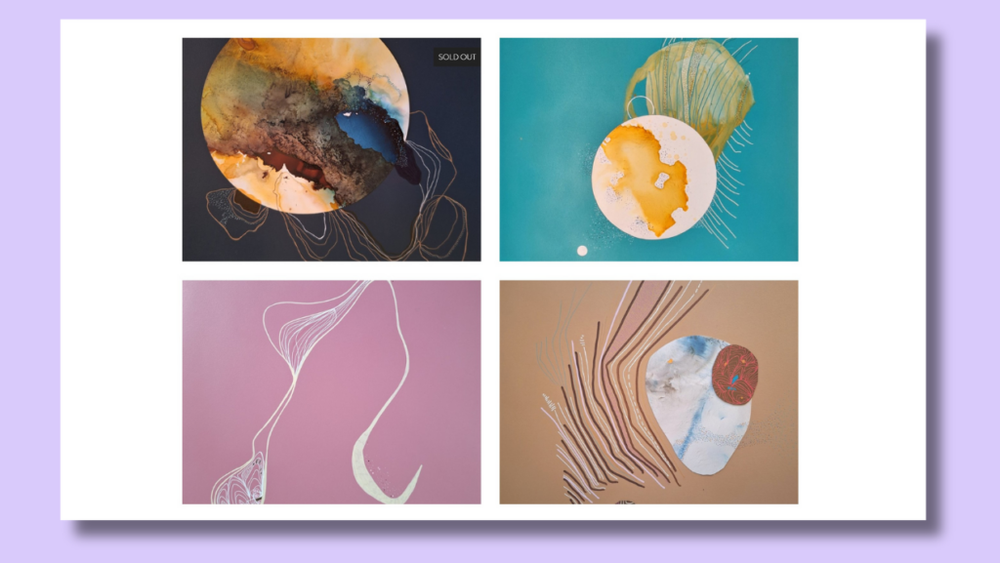
Artist Ashley Berry, known for her hand-painted jewelry, uses small accents in the same color family as her products. However, she still presents the jewelry on a flat, neutral surface that highlights the item’s details for interested shoppers.
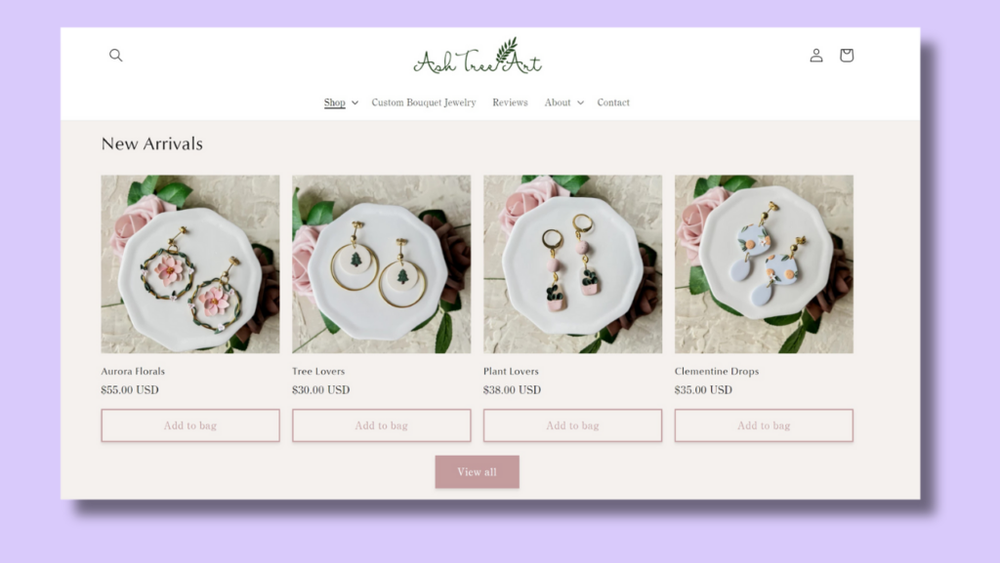
If you don’t feel confident in your documentation abilities, you can hire a professional photographer or a company with a fine art scanner to take care of everything for you. There are a lot of tutorials out there, though, for smartphone photography (which can save you a bit of money).
Educate yourself on copyright and protect your art
2D and 3D art — digital or tangible — is automatically protected by the Copyright Act once it’s created and documented in some form. If you’ve documented and archived your art, your legal ownership is established.
You can register your artwork with the U.S. Copyright Office for additional protection. While this step isn’t necessary to sell art online, it provides a few benefits for artists, such as:
- Official proof of copyright
- Eligibility for financial compensation in a lawsuit regarding copyright
- Exposure of your work when incorporated into the public record
Fees for registering a copyright range from $45 to $125, and there is a five-year grace period for certain registration benefits if you’re not ready to invest upfront.
Watermarking is a free way to protect your images when disseminating them on your website or an online marketplace (like Shopify or Etsy). A watermark is a faint symbol or text placed over an image, making it more challenging to use or reproduce the digital image without permission.
You can add a watermark to your art for free using programs such as Canva or Adobe Photoshop and use any image (such as a logo, your name or signature) as a watermark.
Finally, sign and date all of your artwork to further legitimize it. If the artwork has several editions, clearly label it with the edition number.
Choose the type of art you’ll sell
Selling art online brings the flexibility to offer your creations in a variety of mediums:
- Originals: Selling original art online allows your audience to purchase a one-of-a-kind piece. Many artists selling original works opt to use curated art marketplaces to cater to a high-end market but aren’t bound to these platforms.
- Reproductions: For the widest reach, selling replicas of art allows artists to get more of their work into the world at various price points.
- Limited editions: To balance exclusivity and accessibility, offer a set amount of prints or reproductions for sale. While limited editions historically apply to printmaking, it’s now possible to make limited editions of any type of art. Artists typically create editions featuring between 10 and 50 reproductions.
- Customized art: From semi-customized art to full-blown collaborations, creating art to a client’s specs is another avenue for earning and serving your audience. You’ll need to take an additional sales step and strategize how, when and in what increments you’ll accept payment for these works and clarify a revision or adjustment policy.
- Merchandise: Art can be featured on clothing items, home decor, note cards and more, pairing functionality with original designs. You can make these items independently with supplies such as a DTG garment printer or sheets of transfer film. To outsource this step, print-on-demand companies such as Printful and Gooten can produce merchandise.
Mike Notarfrancesco, a New Jersey-based pen-and-ink illustrator, showcases various types of art for sale on his website’s homepage. This shows visitors their purchase options immediately upon arrival.
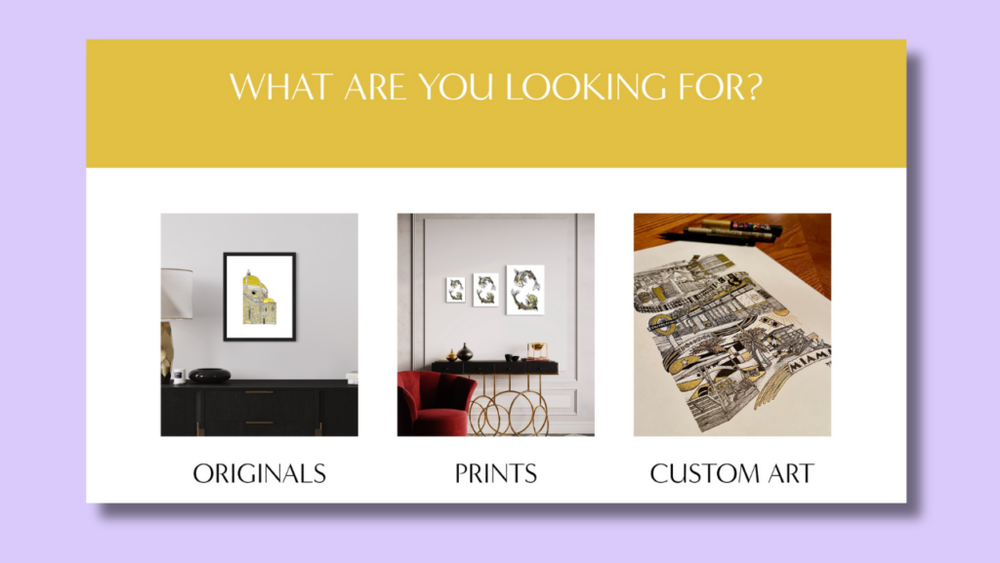
Don’t feel constrained to just one type of art in your online marketplace, as this helps to diversify your offerings and potential sales. If you want to follow current trends, selling prints allows for a wide reach and is a great way to get started.
According to Art Basel’s global market study, in 2023, the volume of art transactions rose to 39.4 million (up 4% compared to 2022), even as art prices—particularly for higher-end pieces—declined. This suggests a growing interest in more affordable and reproducible art.
Decide where you’ll sell your art
Traditional online art markets, such as major galleries, will sell your art on your behalf through their own marketplace to their specifications. While this is a viable way to sell art, new online service providers have expanded to work directly with creative entrepreneurs, eliminating the need for gallery representation (and making selling art online more accessible than ever).
E-commerce and popular online marketplaces are the two primary ways artists and collectors can sell art directly, providing more flexibility and potentially higher profit margins.
Create your own e-commerce store
For unparalleled control over your store, brand and operations, create your own e-commerce store. Many e-commerce platforms allow you to control the site’s aesthetic, including the layout, colors and pages.
Here’s what to look for when selecting an e-commerce platform for your art:
- Multichannel support and the ability to connect with social media platforms
- Inventory databases and tracking abilities
- Support for customer reviews
- Checkout tools and automation options like abandoned cart recovery
- The ability for customers to create accounts
- Automatic calculations in payment processing (e.g., sales tax, credit card fees, duties, shipping costs)
- Consistent technical support through chat, phone or email
- Scalable plans that accommodate increased inventory and sales growth
In addition to these technical details, choose a platform with an easy user experience, robust knowledge base for when you get stuck, and a strong track record with other sellers.
Squarespace is a popular option among artists, and its visual appeal works well with a variety of art designs. This is largely due to the platform’s clean contemporary templates that properly balance white space, which highlights the art itself.
It’s the platform Herrera uses to sell art online. “I was drawn to Squarespace because of its user-friendly templates that offer aesthetically pleasing design and layout options, saving me the hassle of building a site from scratch. In addition to its attractive appearance, Squarespace’s pricing model — which includes a yearly fee and minimal transaction fees — appealed to me … it [also] allows me to seamlessly integrate other content such as my biography, blog posts and event listings.”
Notarfrancesco also uses Squarespace, and while he experienced a learning curve when getting started, he now appreciates the streamlined marketing features that the program provides.
“I had never built a website before and the process was a little bit intimidating at first but now creating/editing my webpages is second nature. The platform is straightforward to use and the graphics are smooth and clean. I also use the email campaigns service [from] Squarespace, and it makes my branding consistent across every point of contact with [my] customers. [The] extensions and plug-ins sync actions on my website to get orders fulfilled, and [I’m] currently working on getting social media reviews synced with my website.”
If you want to explore additional high-quality options, our comprehensive guide to the best e-commerce platforms can help you choose the right tool for your art. If Squarespace is on your mind, we did the legwork to see how it stacks up against other popular options to make your decision easier:
Sell on popular online art marketplaces
When you sell your art through a pre-established art marketplace, you receive access to their built-in audience and an easier overall setup since there are usually certain fixed parameters for setting up your store.
This is a great option for beginners or those on shoestring budgets. These marketplaces are often free to join and list on, and while there are usually fee and commission structures involved, you’re usually charged these fees upon or after the sale of an item.
Popular online art marketplaces include:
- Etsy: This handmade marketplace is a popular destination for original art and prints, with a base of over 90 million buyers. You can set up a basic shop for free, and for an additional charge, Pattern by Etsy allows you to set up a standalone art website, providing the best of both worlds.
- Saatchi Art: This marketplace focuses on selling fine art and prints. You receive 60% of each sale; the company takes 40% of the commission. Promotional opportunities such as curator reviews and multichannel promotion can further expose their community to your work.
- Creative Market: You can sell various types of digital artwork on Creative Market, from creative typography to photography and illustrations. Since tangible products aren’t sold here, there’s no need for printing or shipping your art. As a default, the company places a 50% commission on each sale, although this fee may vary depending on the specifics of your art shop.
- Fine Art America: This popular marketplace allows you to sell originals, prints, home decor and apparel produced by the company’s fulfillment centers. Fine Art America calculates a base price, from which it take 100%. Artists add a “markup” amount as their profit.
- Amazon Handmade: One unique benefit of Amazon Handmade is that the company’s professional selling fee of $39.99 a month is waived once you verify that you sell original work. From there, expect a 15% flat commission fee on everything you sell.
- Society6: This marketplace is best for those looking to monetize their art by selling merchandise. Products range from bath items to furniture, with no shortage of options. Like Fine Art America, Society6 takes 100% of the base price. By default, you’ll receive a 10% markup commission for prints, canvases and framed art, which can be adjusted. Society6 deducts a shipping fee from your earnings, ranging from 30 cents to $8.
- Facebook Marketplace: Facebook Marketplace is completely free to sell on, and there are no transaction fees or commissions since the seller and buyer arrange everything on their own. Very few inventory management options exist, so keep excellent records when selling on Facebook.
If you’re stumped about choosing between an e-commerce store and an art marketplace, you don’t have to pick just one — artists often dabble in both.
Herrara and Berry each found success using multiple sales channels. Herrera discovered that selling on Fine Art America helped attract an audience directly to her Squarespace site. Berry began on Etsy to gain traction and eventually moved to her own platform once she had enough established sales.
Optimize art listings for search engine visibility
Once it’s time to list items on your marketplace of choice, there’s more to consider than simply uploading your art, a title and price. You want to step into the minds of your site visitors. What information is the most relevant and will help them decide to buy your art?
These listing optimization strategies can create the best possible shopping experience for your audience:
- Be descriptive: Integrate keywords that clarify your work’s style, medium and subject. Research keywords that shoppers are actually searching for and find ones relevant to your niche. Include them in titles; this helps people discover your shop through search results.
- Add alt-text descriptions to your listings: Visually impaired visitors benefit from helpful descriptions of photographs — as do search engines — to better understand what your listings offer.
- Write compelling descriptions: Help viewers draw the connection between your inspiration and techniques, evoking your desired feelings to engage potential customers.
- Include clear technical details: So purchasers know what to expect, list the dimensions, weight, materials and delivery method of the art.
- Leverage tags and categories: If you can further specify your listings by adding tags or categories, marketplaces can get your art in front of more people. Consider tagging your medium, color, subject matter and functionality — to name a few — when adding and organizing your work so the marketplace can index and suggest your art to customers searching for similar items.
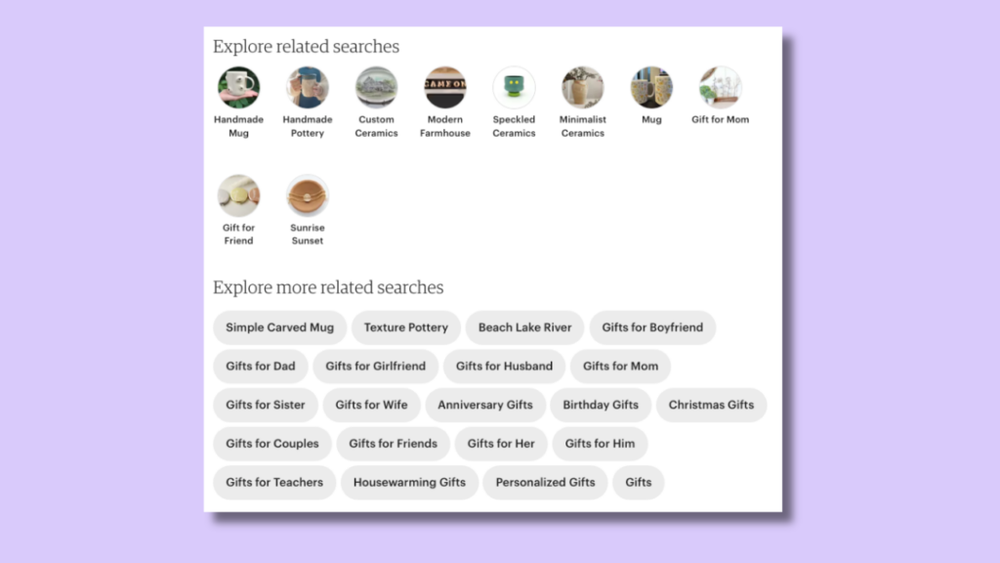
Set your pricing
Pricing your art transforms the value conveyed through your documented art and listings into a tangible call to action for your potential customer. This can be challenging, given the subjective value of art, especially when you’re first starting.
While there’s no one path to perfect pricing, Brake offers a helpful framework to streamline your pricing efforts. “There’s a common misconception that art pricing directly reflects the amount of effort put into a painting, but that’s not quite how it works. The traditional formula for pricing artwork is to find other artists creating similar work using the same mediums as you and who are at the same stage in their career. From there, analyze their prices, breaking down their [pricing] per square inch. Do that with at least three artists. Then, use the average price per square inch and price your work from there.”
She explained that pricing evolves over time due to a variety of factors that are standard in the art market. “As your career evolves — marked by increased success, the impact of inflation, acquisition by high-profile collectors or exhibitions in prestigious venues — your price per square inch should rise accordingly.”
Promote your artwork
At some point, you’ll have to decide how to promote your artwork. The internet has changed the art world and provided new strategies for exposure. You can promote your online art marketplace and work by:
- Embracing social media
- Starting an email newsletter
- Connecting with other artists through networking events
- Submitting your art to publications
- Adding a blog to your online art marketplace
- Investing in advertising, such as Facebook ads, to bring traffic to your site
- Joining online artist groups and forums to engage with fans
In a world where artists must constantly vie for attention online, getting lost in the numbers game is easy. However, Notarfrancesco reminds artists not to let follower count fool them. “The days of vanity numbers are gone. You truly don’t need to worry about how many followers you have if you create deep connections with people.”
And Berry told CNN Underscored Money that offline engagement supports an online marketplace. “If you have the opportunity, in-person markets are a great way to spread awareness of your art as well. Once you’ve introduced your art to your audience, continue to engage them through email marketing where there’s less competition for attention.”
Select a shipping partner or strategize a DIY solution
Once you’ve broken ground and made your first sale(s), your art needs to make it safely and swiftly to your buyer. Brake advises packaging your artwork meticulously to protect it from any damage. “If that’s not for you, hire someone who knows exactly how to do [it]. Then, find a shipping company that works with artists … [and] always be sure shipments are insured.”
The extra step of insuring artwork, especially for high-value or original items, ensures peace of mind for both you and the buyer, making it a wise investment in your art business. UPS and DHL offer insurance options. For more comprehensive coverage, consider an insurance company specializing in art protection, such as AXA XL.
Working with a print-on-demand partner like Printful can mitigate the extra step of printing and shipping your artwork. Printful manufactures and ships art prints and select merchandise within two to five days of an order. It also takes responsibility for misprinted, damaged or lost shipments, offering the customer a refund or reprint with expedited shipping. Its stellar customer support team is available via chat or email, and they respond to every request within 24 hours.
Frequently asked questions (FAQs)
Digital art can be sold on platforms like Etsy and Creative Market or via your own website using popular builders like WordPress, Shopify or Squarespace.
Many artists use Squarespace to sell art online. Etsy, with its marketplace of over 90 million users, is a great option for those who don’t want to set up their own shop.
You are allowed to sell AI-generated artwork as long as you disclose that the art was created with an AI tool. However, you cannot currently claim copyright on artificially generated images.
There are three main avenues for making prints of art to sell online. You could find a local brick-and-mortar printer, send images to an online fine art printer or set up a print-on-demand marketplace on a site like Printful, which integrates shipping operations directly into your online store.
As far as profitable formats, paintings and prints are the top sellers. Subject-wise, landscapes, floral art and abstract art are most coveted by collectors. Digital art — such as printable art, NFTs and augmented art — are also seeing a rise in profitability.
This post was originally published on this site be sure to check out more of their content









